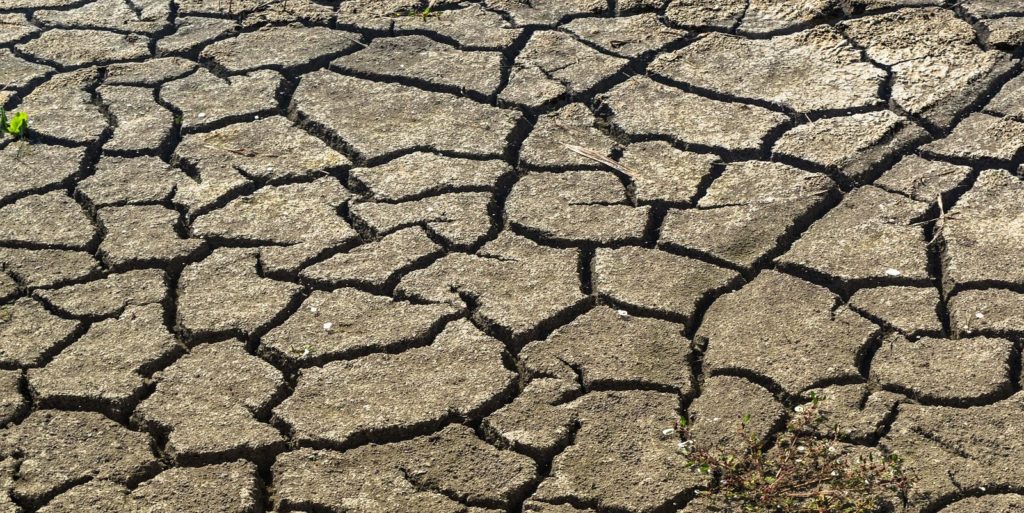Hot-Headed: How Climate Change-Induced Drought Is Destabilising Global Peace
ENVIRONMENT, 7 Aug 2017
Ruth Lyons | Vision of Humanity – TRANSCEND Media Service
“There is mounting evidence that climate change is creating the conditions for instability and poverty, two significant contributors to the outbreak of civil war and violence.”
Jun 2017 – In March of this year, US Defence Secretary James Mattis broke ranks with the presidency and referred to climate change as a threat to national security. For many this may seem a strange choice of phrase, as when we think of climate change we tend to imagine rising sea levels and extreme weather, rather than an increased threat of conflict. Yet, there is mounting evidence that climate change is creating the conditions for instability and poverty, two significant contributors to the outbreak of civil war and violence in the global south. One of the largest drivers behind this increased threat is drought, which was named by the Pew Research Centre as the most salient climate change concern across all global regions. According to the World Bank, this is because almost 40% of the world’s population relies on agriculture for their income and agriculture accounts for 70% of water use, meaning that in the presence of severe drought there is not only increased economic insecurity, but high levels of resource scarcity. In fact it was only in March of this year that a drought and conflict induced famine put almost 16 million people on the brink of starvation in East Africa.
The link between drought, poverty and violence can be most evidently seen in the Yemen, a country reliant on agriculture, which accounts for 17% of its total GDP. Yemen is one of the most water scarce countries in the world. To put it in perspective, according to the UN a region is water stressed if it has lower than 1,700 cubic metres of renewable fresh water per year per person, in 2012 Yemeni’s had 140 cubic metres, and worse, as of 2015 Yemeni’s have only 86 cubic metres. This has meant an absolute collapse in agriculture, and left millions of people in desperate need of food and water. Since the beginning of the civil war in 2015, water has become a weapon, with both government forces and Houthi rebels blocking or destroying water aid in an attempt to starve and demoralise the enemy. The consequences of this new mode of violence have been three-fold.
Firstly, Al Qaida has been gaining popularity in the south of the country by providing water to, and building wells in, local communities; this has led to an increase in membership, as many young men have joined the group in order to receive water for their families. The strengthening of Al Qaida in Yemen is further fuelling the conflict, and supplying a model for terrorist networks around the region, who use a combination of political instability and providing for the needs of locals to gain a strong foothold in a country. Secondly, a study by Sanna’a university researchers claimed that 70-80% of all rural conflicts in Yemen are related to disputes over water, killing up to 4,000 people each year. These small scale water wars provided a background of local and regional tensions that allowed violence to flourish at the beginning of the civil war. Thirdly, mass internal displacement has meant that rural populations who have lost their livestock due to drought have been moving into the more urban centres of the country, causing deepening tensions over resources. Furthermore, many rival factions and tribes are now cohabiting in the same area has led to a replication of the cycles of violence happening across Yemen. These factors combined show how climate change induced drought can not only act as what the Pentagon refers to as a ‘threat multiplier’, but also create the conditions and the tensions that lead to violent conflict.
According to a report by the UN, in the five years before the conflict, the drought left over 80% of Syria’s livestock dead and caused 75% of its farms to fail, leading to a mass exodus of the population from the rural to the urban.
A further case to examine when assessing the impact of climate change induced drought on conflict is Syria, which experienced the worst drought for 900 years in the decade leading up to the outbreak of civil war in 2011. According to a report by the UN, in the five years before the conflict, the drought left over 80% of Syria’s livestock dead and caused 75% of its farms to fail, leading to a mass exodus of the population from the rural to the urban. This displacement of over one million people led to increased resource scarcity and poverty in Syria’s cities, which contributed heavily to the protests that began in 2011, leading to one of the most deadly conflicts the region has ever seen. It is worth noting that there were many pre-existing tensions and anti-regime sentiments that culminated in the civil war. However, this does not refute the evidence that a severe drought highly exacerbated, and helped to create, the conditions of conflict; this is clear in the fact that economic woes have been cited to be one of the main grievances that led to calls for the removal of the regime in Syria, as the government refused to help provide enough food and water aid for the overflowing urban centres.
The cases of Yemen and Syria give a startling insight into the impact climate change induced drought can have on global peace. In developing countries that have a history of ethnic tensions, a paper in the Proceedings of the National Academy of Sciences journal found that a quarter of violent conflicts coincided with a major climate event such as a drought. As more and more extreme weather events occur, this is likely to increase. But even in the developing world there is no escaping the consequences of climate change. As more and more parts of the world become inhospitable to humans, millions of climate refugees will need to find shelter and safety elsewhere is less impacted zones such as the UK, the US and the EU. As population density increases, so will resource scarcity, leading to further tensions and further global instability.
We are a world that runs on water; for our food, our drinks, our industry, our clothing; there is little you can find that hasn’t required water usage at some stage in its production. Therefore, as wells begin to dry up, precipitation decreases or evaporates mid-air and severe droughts continue to ravage our infrastructure and agriculture, we will find ourselves in a more and more resource-scarce world. And as has been shown time and time again, if there’s something worth fighting over, it’s the very thing we need to live.
______________________________________________
 Ruth Lyons is a Philosophy, Politics and International Relations undergraduate studying at NCH, with a particular interest in the Middle East. She currently works as a research and policy development assistant at a higher education think tank in London, and has previously held positions at institutions such as the House of Lords and the GLA.
Ruth Lyons is a Philosophy, Politics and International Relations undergraduate studying at NCH, with a particular interest in the Middle East. She currently works as a research and policy development assistant at a higher education think tank in London, and has previously held positions at institutions such as the House of Lords and the GLA.
Go to Original – visionofhumanity.org
DISCLAIMER: The statements, views and opinions expressed in pieces republished here are solely those of the authors and do not necessarily represent those of TMS. In accordance with title 17 U.S.C. section 107, this material is distributed without profit to those who have expressed a prior interest in receiving the included information for research and educational purposes. TMS has no affiliation whatsoever with the originator of this article nor is TMS endorsed or sponsored by the originator. “GO TO ORIGINAL” links are provided as a convenience to our readers and allow for verification of authenticity. However, as originating pages are often updated by their originating host sites, the versions posted may not match the versions our readers view when clicking the “GO TO ORIGINAL” links. This site contains copyrighted material the use of which has not always been specifically authorized by the copyright owner. We are making such material available in our efforts to advance understanding of environmental, political, human rights, economic, democracy, scientific, and social justice issues, etc. We believe this constitutes a ‘fair use’ of any such copyrighted material as provided for in section 107 of the US Copyright Law. In accordance with Title 17 U.S.C. Section 107, the material on this site is distributed without profit to those who have expressed a prior interest in receiving the included information for research and educational purposes. For more information go to: http://www.law.cornell.edu/uscode/17/107.shtml. If you wish to use copyrighted material from this site for purposes of your own that go beyond ‘fair use’, you must obtain permission from the copyright owner.
